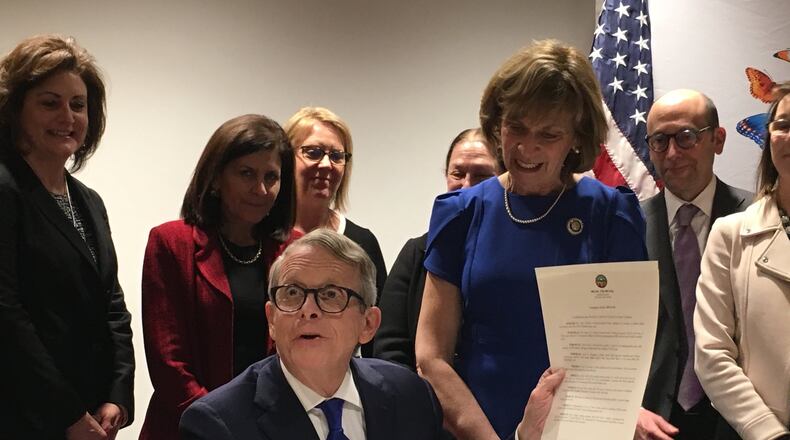He asked the experts to make recommendations before his first two-year state budget is due March 15.
MORE: Infant deaths increases, Ohio puts $50M in budget to address issue
In fiscal year 2017, 9,131 Ohio families were regularly visited by social workers, nurses or other health care professionals who touch base on nutrition, child development, medical issues and other topics. DeWine said Ohio reaches just 4 percent of the families eligible for the program.
It is voluntary to receive home visiting services and the visits can begin in pregnancy and continue through the child’s first years of life.
The visits pay long-term dividends such as higher rates of vaccination and breast feeding, improved kindergarten readiness and lower infant mortality rates, DeWine and other advocates said.
Ohio’s infant mortality rate — the number of babies per 1,000 births who die before there first birthday — is above the national average and the mortality rate for black babies is three times higher than white babies. Ohio’s overall infant mortality rate declined from 7.4 in 2016 to 7.2 in 2017 while the infant mortality rate for black infants increased.
MORE: Ohio to raise marriage age after Dayton Daily News investigation
DeWine called those statistics unacceptable and tragic.
Nearly 12 percent of all Ohio babies are born premature – before 37 weeks gestation – and one in seven black babies are born premature. Prematurity and low birth weights increase the risk of disability, health issues and death.
Home visits are a successful way to reduce infant mortality and a 2009 study showed those participating in a New York home visiting program had a 48 decrease in low-weight births compared to a control group.
The return on investment for home visit programs is as high as $5.70 for every $1 spent on high risk families, according to a RAND study on early childhood interventions that was published in 2005. Numbers on the effectiveness of Ohio’s home visit programs are not available.
It is unclear how much private, state and federal money combined from all regions of the state is spent on home visiting programs. Ohio dedicates $19.6 million a year in state funds — a figure DeWine says he’d like to at least triple.
Judith Van Ginkel, president of Every Child Succeeds, the home visit program at Cincinnati Children’s Hospital, says it costs about $3,500 per family but it is a small investment compared with the benefits.
MORE: Private practice in Greene County joins Five Rivers Health Centers
DeWine, the father of eight and grandfather of 23, said investing in children in their first five years is crucial. “This is the best money we can spend.”
Dayton Children’s Hospital Chief Executive Deborah Feldman said she is excited that DeWine’s focus is on children.
“He is the children’s governor. Kids don’t vote so it takes a tremendous amount of commitment from an elected leader to put people who don’t vote first,” Feldman said Monday. “And that’s what he’s going to do.”

